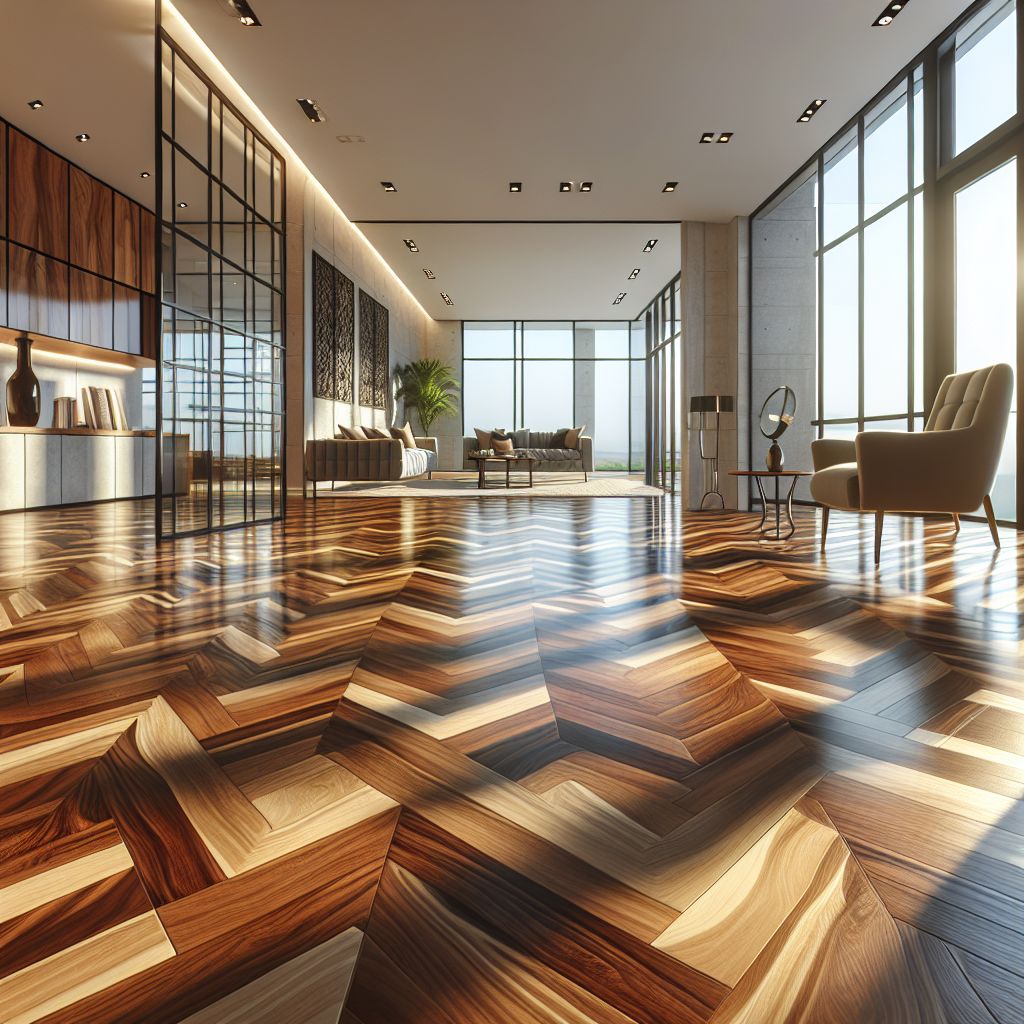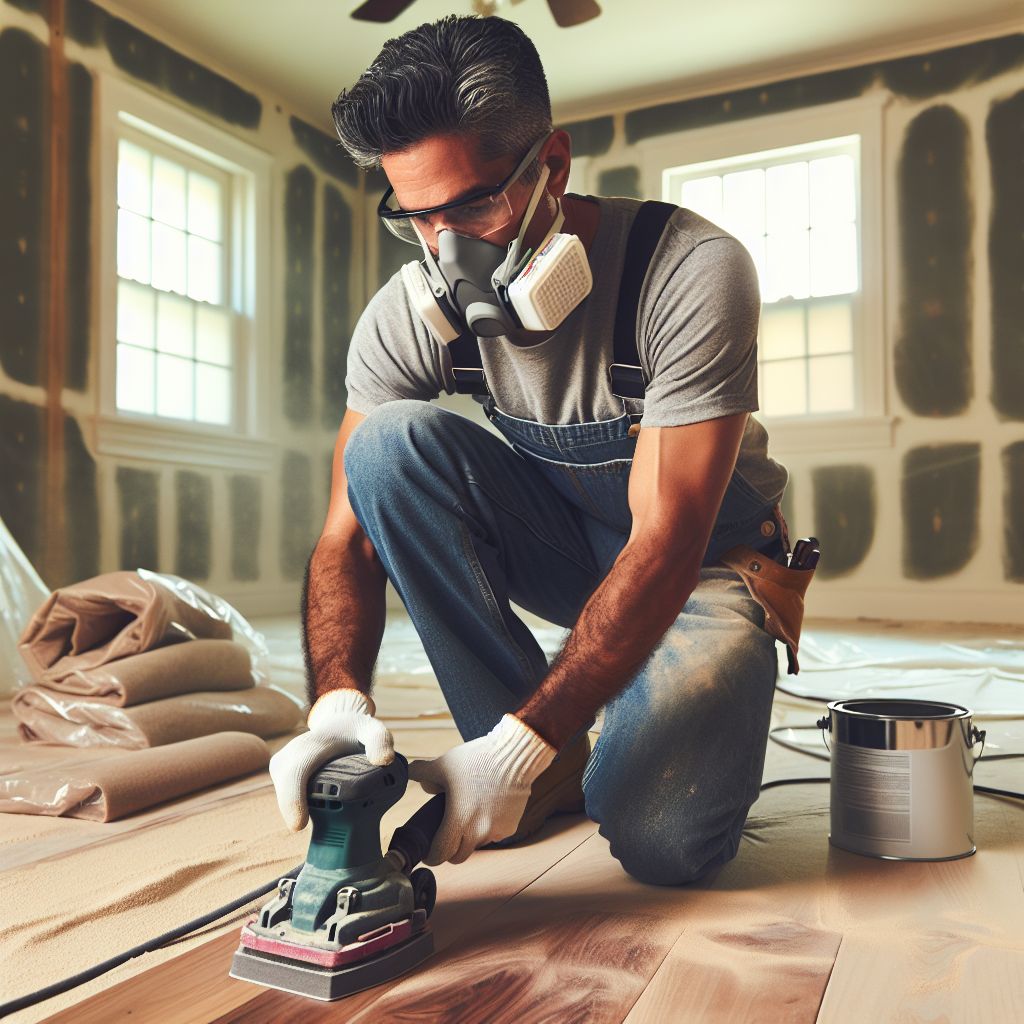
Key Takeaways
- Refinishing hardwood floors is typically more cost-effective than replacing them, with average savings of 50% or more.
- The refinishing process can make old floors look brand new and usually includes sanding, staining, and sealing.
- Replacement is a good option when floors are extensively damaged, but it’s important to budget for the higher costs and longer installation time.
- Refinishing has a significant impact on home value and can last for decades with proper care.
- Before deciding, homeowners should assess the floor’s condition, personal style, inconvenience during the process, and budget.
Revitalize or Replace? The Cost-Effective Path to Beautiful Hardwood Floors
When you look at your hardwood floors and see signs of wear and tear, it’s time to make a decision. Should you give them a new lease on life through refinishing, or is it time to start fresh with new floors? Let’s explore the most economical and practical route to restoring the charm of your hardwood floors.
Weighing the Pros and Cons: Refinishing vs Remodeling
| Refinishing | Remodeling | |
| Cost | $3 to $8 per square foot | $8 to $12 per square foot before installation fees |
| Timeline | 4 to 5 days | Several days to weeks |
| Pros | Cost-effective, eco-friendly, less disruption, quick process | Modernizes space, full customization, good option for extensive damages |
| Cons | Surface fix only, limited changes | Costly, long installation process, disruptive, wasteful |
Crunching the Numbers: Refinish vs. Replace Costs
Let’s talk money because, at the end of the day, your budget will heavily influence your decision. On average, refinishing your hardwood floors will cost between $3 to $8 per square foot. Now, if you’re looking at replacing your floors, the costs jump significantly. You’ll be looking at anywhere from $8 to $12 per square foot for new mid-range hardwood flooring, and that’s before installation fees, which can add another $3 to $8 per square foot. So, if you have a 200-square-foot room, refinishing might cost you around $600 to $1,600, while replacing could set you back $2,200 to $4,000. Big difference, right?
The True Value of Floor Refinishing
Refinishing isn’t just about saving money; it’s about value. A well-done refinishing job can transform a room, bringing out the richness and depth of the wood. But it’s not just about looks. Refinished floors can last another 10 to 20 years, depending on traffic and care. That’s a lot of value for your relatively low investment.

The Art of Floor Refinishing: A Budget-Friendly Makeover
Imagine erasing years of foot traffic, scratches, and dents from your floors. That’s the magic of refinishing. It’s a thorough process that strips away the old and reveals the underlying beauty of the wood.
Understanding the Refinishing Process
The refinishing process is a detailed one. First, the room is prepared by removing furniture and tackling any necessary repairs. Next, the existing finish is sanded off, which can be a bit messy and noisy, but it’s essential for a smooth outcome. After sanding, you get to choose a new stain color that complements your home’s style. Finally, a protective sealant is applied, giving your floors a fresh, durable finish. And voilà, your floors look as good as new without breaking the bank.
Done right, this process can leave your floors looking brand new.
Pros of Choosing to Refinish
So, why should you consider refinishing? Here are a few compelling reasons:
- Cost Savings: As mentioned earlier, refinishing can be significantly less expensive than replacing.
- Eco-Friendly: By refinishing, you’re not contributing to landfill waste with your old flooring.
- Less Disruption: While refinishing is a bit disruptive, it’s typically quicker than a full replacement, meaning you get your home back to normal sooner.
But the biggest pro of all? The results. There’s nothing quite like the satisfaction of seeing your old, worn floors restored to their former glory.
Cons: When Refinishing May Not Be Enough
Refinishing is great but isn’t a fit in every situation. For example:
- Severe Damage: If floors have deep gouges or warped planks, refinishing won’t be enough to fix these issues.
- Multiple Refinishes: If your floors have already refinished several times, you’ll get diminishing returns on quality.
- Desire for Change: If you want a different wood type or a new layout; refinishing doesn’t allow for these changes.
The Lifespan of a Refinished Floor
With proper care, a refinished floor can last as long as a new one. We’re talking decades here. The key is maintenance. Keep those floors clean, use felt pads under furniture, and touch up scratches as soon as they happen. Treat your floors well, and they’ll return the favor with years of beauty and performance.

Starting Anew: Replacing Hardwood Floors
When refinishing isn’t an option due to the extent of damage or if you’re yearning for a completely different look, replacing your hardwood floors might be the way to go. This path, while more costly upfront, offers a fresh start and a chance to redefine your home’s style.
The Steps of Floor Replacement
Replacing hardwood floors is a more involved process than refinishing. It starts with the removal of the old flooring, a labor-intensive step that involves quite a bit of disruption. Next comes the subfloor preparation, which is essential for the longevity of your new floors. Only then are the new hardwood planks installed, sanded, stained, and sealed. This process can take several days to weeks, depending on the size of the area and the complexity of the job.
Throughout the replacement, you’ll have plenty of opportunities to customize. From choosing the type of wood to selecting the finish, you get to make decisions that will influence the look and feel of your home for years to come.
Pros: The Advantages of New Hardwood Floors
Let’s delve into the positives of going with new hardwood floors:
- Modernization: New floors can modernize your space with the latest styles and trends.
- Customization: You have complete control over the wood species, plank size, color, and finish.
- Longevity: With new floors, you’re resetting the clock on your home’s flooring lifespan.
It’s a fresh slate, and that’s something that can be very exciting for a homeowner looking to make a change.
Cons: The Costs Behind the New
But with new floors come new costs. Here’s the deal:
- Higher Expenses: The materials and labor for new floors can double or even triple the cost of refinishing.
- Time and Inconvenience: The installation process is longer and more disruptive to your daily life.
- Waste: Replacing means disposing of your old flooring, which can be less eco-friendly.
These factors need to be weighed carefully against the benefits before making a decision.
Long-Term Value of Replacement
Despite the higher upfront costs, new hardwood floors can be a sound investment in your home’s value and your quality of life. A beautiful, well-installed hardwood floor can last a lifetime and is always in vogue, potentially offering a good return on investment if you ever decide to sell your home.
The Lifespan of New Hardwood Floors
The lifespan of a new hardwood floor can vary depending on several factors, including the quality of the wood, the installation method, the level of maintenance, and the amount of foot traffic it receives. However, a well-installed and properly maintained hardwood floor can last for decades, and in some cases, even more than a century.
On average, hardwood floors can last between 25 to 100 years or more. Regular cleaning, polishing, and refinishing, along with prompt spill cleanup, using protective pads under furniture, and avoiding abrasive footwear indoors, can greatly extend hardwood floor lifespan.

Decision Time: Factors to Weigh Before Taking Action
So, you’ve got the facts on refinishing and replacing. Now it’s decision time. Here are the key factors you should consider before making your choice:
Consider the Age and Condition of Your Floors
If your hardwood floors are old but still in good condition, refinishing is a no-brainer. But if they’re damaged beyond repair, it’s probably time to replace them. Be honest with the state of your floors and choose accordingly.
Analyze Your Personal Style Preferences
What’s your vision for your home? Do you prefer the classic charm of your existing floors, or are you looking for a more contemporary update? Your personal style will heavily influence your decision.
Assess the Time and Inconvenience Factor
Consider how much time you can realistically live with the renovation process. Refinishing is faster, but replacing gives you a blank canvas for change.
Budgeting for Floors: Staying Grounded Financially
Finally, let’s talk budget. Be clear on what you can afford to spend without stretching yourself too thin. Remember, refinishing usually offers more bang for your buck, but if you can afford it, new floors can be a worthwhile investment.
Seal the Deal: Choosing the Right Path for Your Home
Armed with knowledge and a clear understanding of your needs, you’re now ready to make an informed decision. Whether you refinish or replace, the choice you make will set the stage for your home’s aesthetic and comfort for years to come. So consider wisely, plan meticulously, and enjoy the transformation of your home’s foundation.

Frequently Asked Questions
How Much Can I Save by Refinishing Instead of Replacing?
- Refinishing hardwood floors typically costs between $3 to $8 per square foot.
- Replacing hardwood floors can cost between $8 to $12 per square foot for the materials alone, with installation adding another $3 to $8 per square foot.
- On a 200-square-foot area, refinishing could save you anywhere from $1,600 to $2,400 when compared to replacing.
It’s clear that refinishing your floors can lead to substantial savings. However, always get multiple quotes and consider the long-term value as well.
For instance, if refinishing extends the life of your floors by another 10 years, that’s a decade of not having to worry about your floors. That’s a decade of savings!
Remember, while the upfront cost is important, also consider the longevity and aesthetic value you’re getting from the service. Sometimes, spending a bit more now can save you a lot in the long run or simply make you happier.
Can All Types of Hardwood Floors Be Refinished?
Most hardwood floors can be refinished, but there are exceptions. Floors with too much wear, deep damage, or those that have been refinished several times already might not be suitable for another refinishing. Engineered hardwood, which has a thin veneer of real wood, can only be refinished once or twice before the veneer is compromised.
Always consult with a professional to assess the condition of your floors and determine the best course of action.
How Long Does Refinishing Take Compared to Replacing?
Refinishing hardwood floors generally takes less time than replacing them. A standard refinishing project can be completed within 4 to 5 days for an average-sized room, while replacement can take a week or more, not including the time needed for the new wood to acclimate to your home’s environment.
Does Floor Refinishing Increase Home Value?
Yes, refinishing your hardwood floors can increase your home’s value. It’s a cost-effective way to enhance the appearance of your floors, which is a key selling point for potential buyers. In fact, the National Association of Realtors reports that homeowners can expect to recover over 100% of the cost of refinishing hardwood floors when they sell their home.
What Are the Signs That I Should Replace Instead of Refinish?
Here are some indicators that it might be time to replace your hardwood floors:
- Severe Damage: If your floors have deep scratches, warping, or water damage, refinishing might not be enough.
- Multiple Refinishes: Floors that have been refinished several times may not have enough material left to sand down again.
- Desire for a New Look: If you want to change the species of wood, plank size, or direction of the floorboards, replacement is your best bet.
- Structural Issues: If there are problems with the subfloor or the floor’s structural integrity, you’ll need to replace the floors to address these issues.
Always weigh these signs against the potential cost savings of refinishing. Sometimes, the investment in new floors can bring you peace of mind and a fresh start for your home’s interior design.





Leave a Reply